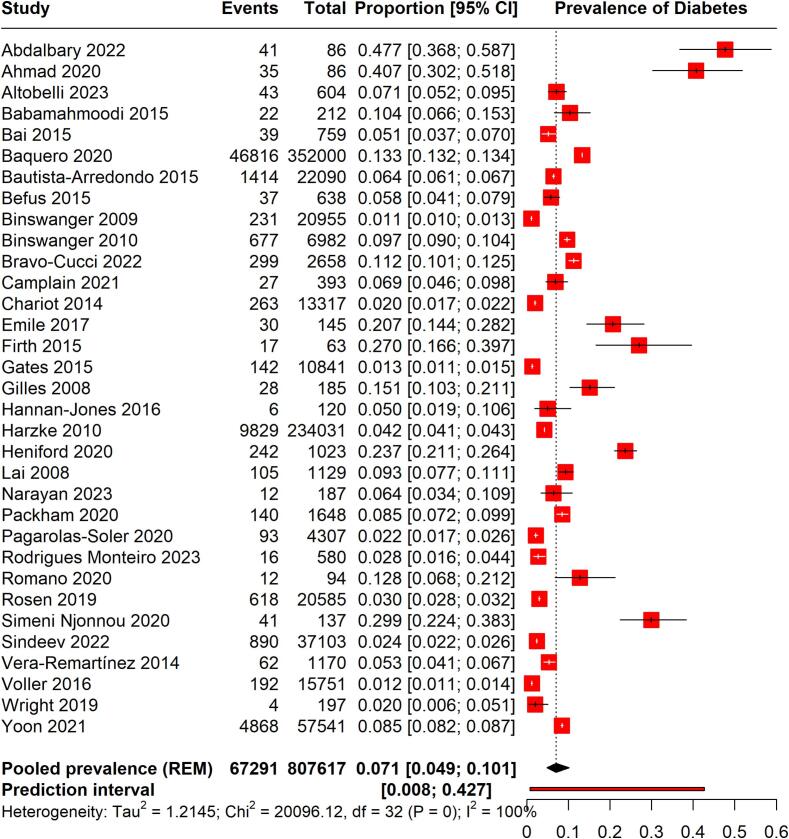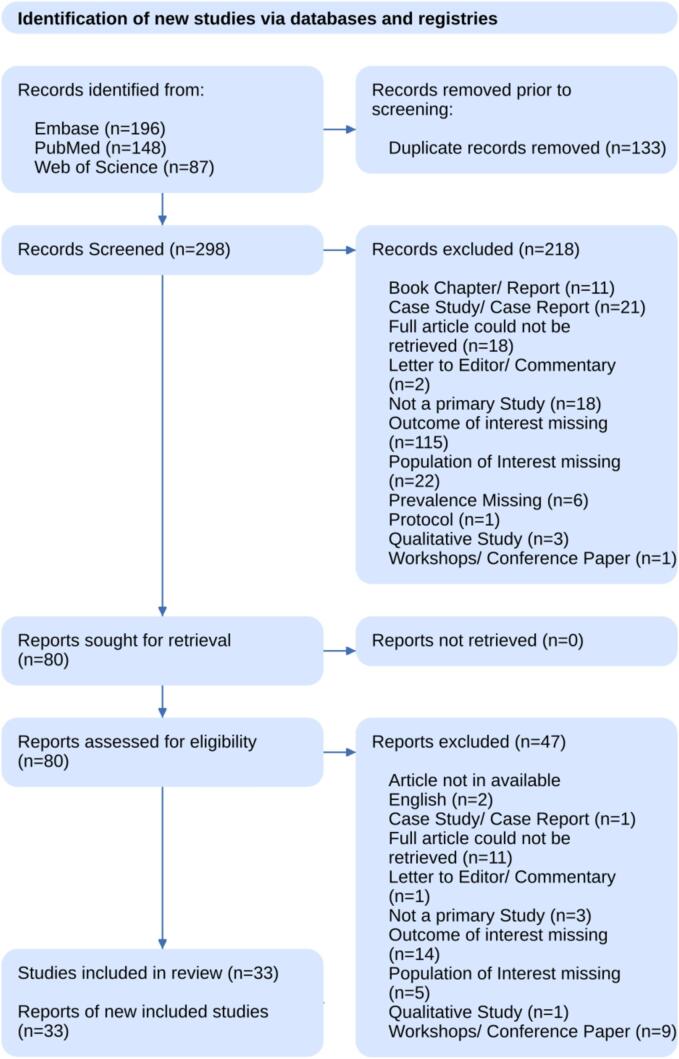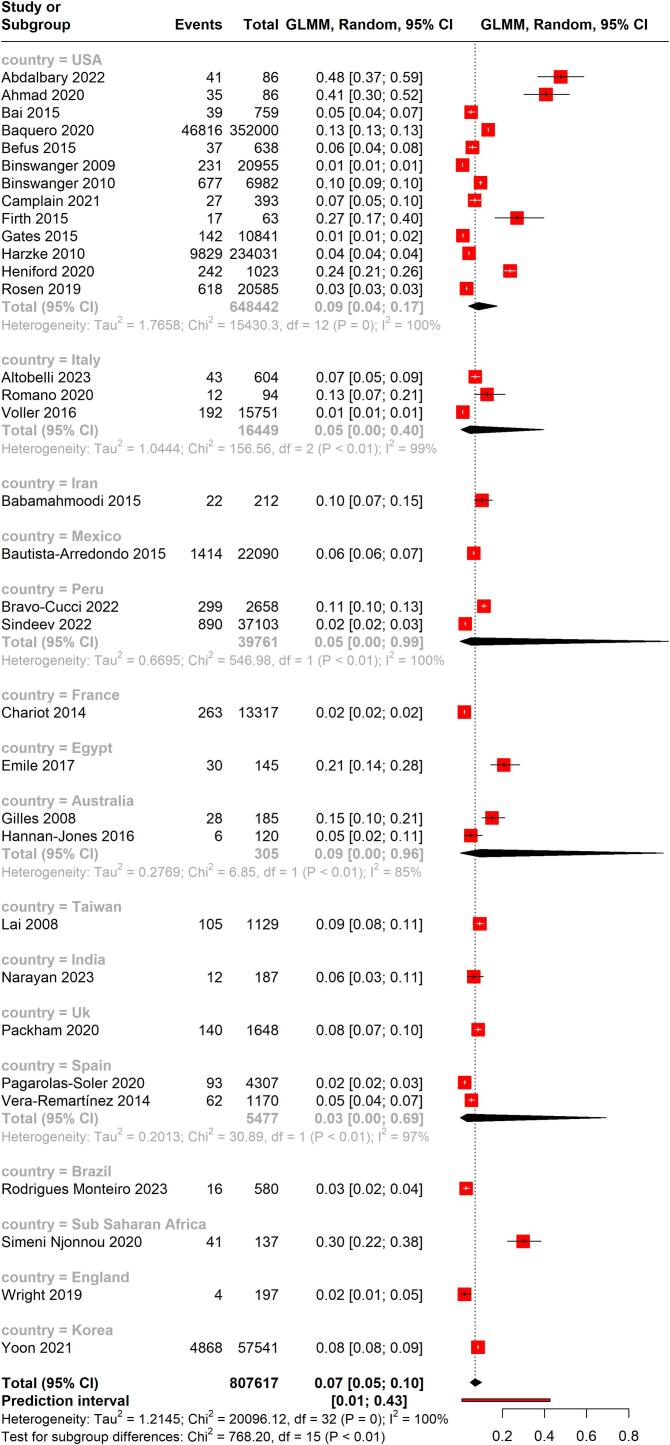矫正设施中的糖尿病负担:一项全球系统综述和荟萃分析。
IF 3.3
Q1 ENDOCRINOLOGY & METABOLISM
Journal of Clinical and Translational Endocrinology
Pub Date : 2024-11-22
DOI:10.1016/j.jcte.2024.100374
引用次数: 0
摘要
背景:糖尿病是世界范围内重大的公共卫生挑战。虽然糖尿病在普通人群中的患病率和管理已经得到了广泛的研究,但对被监禁者糖尿病的全面研究还很缺乏。本研究旨在进行系统回顾和荟萃分析,以确定监狱人口中糖尿病的患病率。方法:系统评价纳入了有关监狱人群糖尿病患病率的研究报告。从2000年到2023年11月4日,在PubMed、Web of Science和EMBASE中进行了搜索,并于2023年12月15日进行了更新。利用嵌套Knowledge web软件进行筛选和数据提取。使用JBI工具进行质量评估。在R软件4.3版中采用随机效应模型进行meta分析。结果:纳入33项研究,包括807,617名参与者,其中67,291名为糖尿病患者。发现监狱人群中糖尿病的总患病率为7.1% (95% CI: 4.9%至10.1%),显示出高度异质性(I2 = 100%)。亚组分析显示显著的地理差异:美国的患病率为9% (95% CI: 4%至17%),意大利为5% (95% CI: 0%至40%),伊朗为10% (95% CI: 7%至15%),埃及为21% (95% CI: 14%至28%)。LFK指数为-3.3表示存在发表偏倚。结论:研究表明,糖尿病是监狱中的一个重大健康问题,患病率为7.1%,与一般人群的患病率相当。不同研究的显著差异表明,在矫正环境中糖尿病管理面临挑战。这些研究结果强调,考虑到监狱的独特挑战和风险因素,有必要制定量身定制的医疗保健战略。本文章由计算机程序翻译,如有差异,请以英文原文为准。



Burden of diabetes in correctional facilities: A global systematic review and meta-analysis
Background
Diabetes mellitus presents significant public health challenges worldwide. While its prevalence and management in the general population have been extensively studied, comprehensive research on diabetes among incarcerated individuals is lacking. This study aims to conduct a systematic review and meta-analysis to determine the prevalence of diabetes within the prison population.
Methods
The systematic review included studies reporting on the prevalence of diabetes in prison populations. Searches were conducted in PubMed, Web of Science, and EMBASE from 2000 to November 4, 2023, with an update on December 15, 2023. Nested Knowledge web software was utilized for screening and data extraction. Quality assessment was conducted using the JBI tool. A meta-analysis was performed using a random-effects model in R software version 4.3.
Results
Thirty-three studies were included, encompassing 807,617 participants, with 67,291 reported as patients with diabetes. The pooled prevalence of diabetes in prison populations was found to be 7.1% (95% CI: 4.9% to 10.1%), exhibiting high heterogeneity (I2 = 100%). Subgroup analysis revealed significant geographical variability: the United States had a prevalence of 9% (95% CI: 4 %to 17 %), Italy 5% (95% CI: 0% to 40 %), Iran 10% (95% CI: 7 % to 15 %), and Egypt 21% (95% CI: 14% to 28 %). Notable variations in prevalence were also observed in countries like France, Australia, Taiwan, India, the UK, Spain, Brazil, and Sub-Saharan Africa. An LFK index of −3.3 indicated the presence of publication bias.
Conclusion
The study reveals that diabetes mellitus is a significant health concern in prisons, with a prevalence of 7.1%, comparable to that in the general population. The marked variability across studies indicates the challenges of diabetes management in correctional settings. These findings highlight the need for tailored healthcare strategies, considering prisons’ unique challenges and risk factors.
求助全文
通过发布文献求助,成功后即可免费获取论文全文。
去求助
来源期刊

Journal of Clinical and Translational Endocrinology
ENDOCRINOLOGY & METABOLISM-
CiteScore
6.10
自引率
0.00%
发文量
24
审稿时长
16 weeks
 求助内容:
求助内容: 应助结果提醒方式:
应助结果提醒方式:


